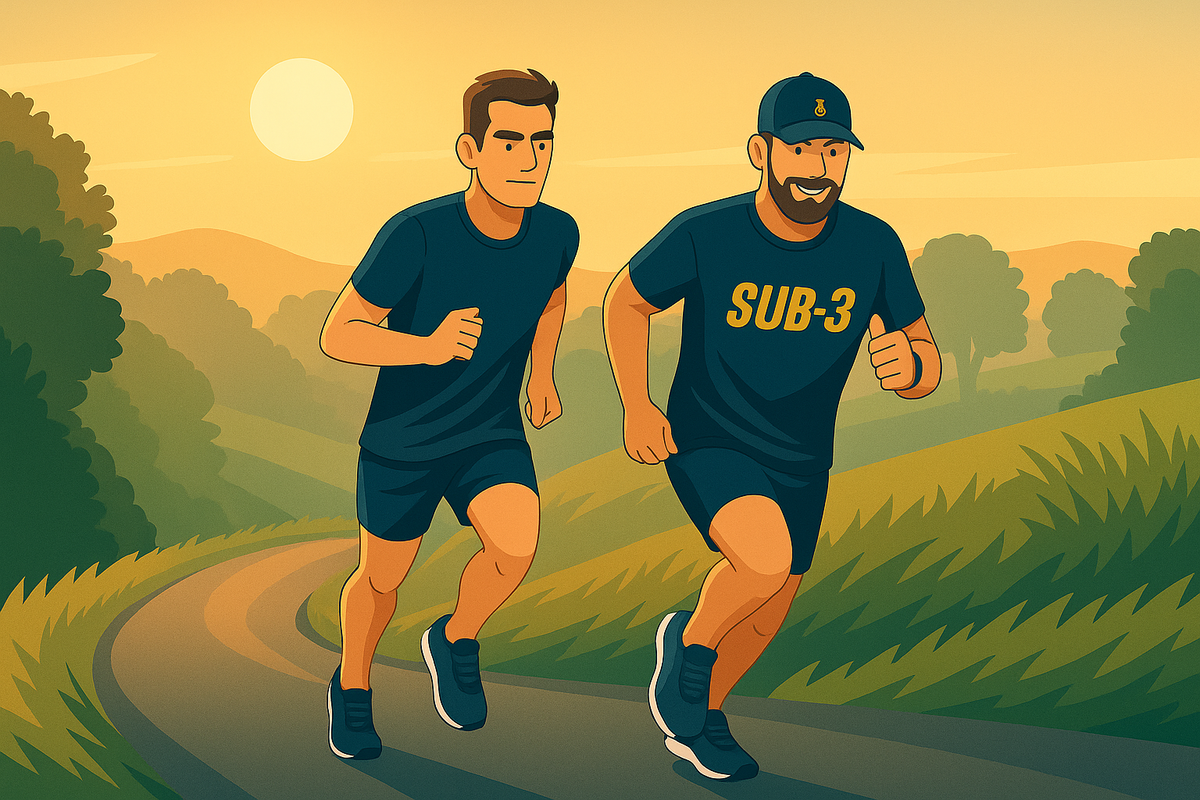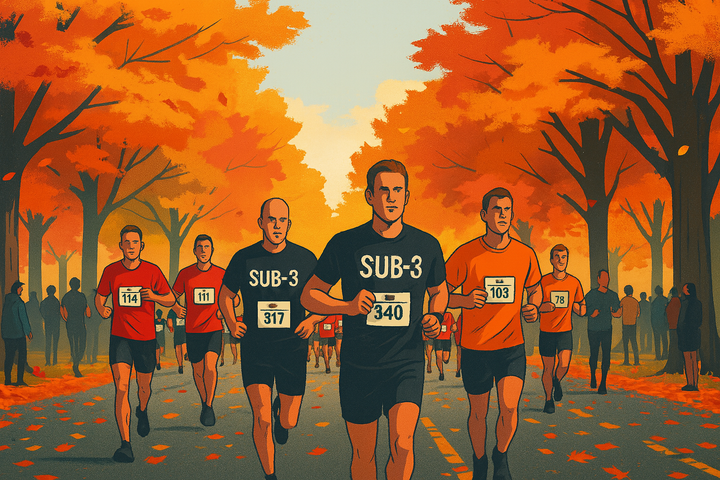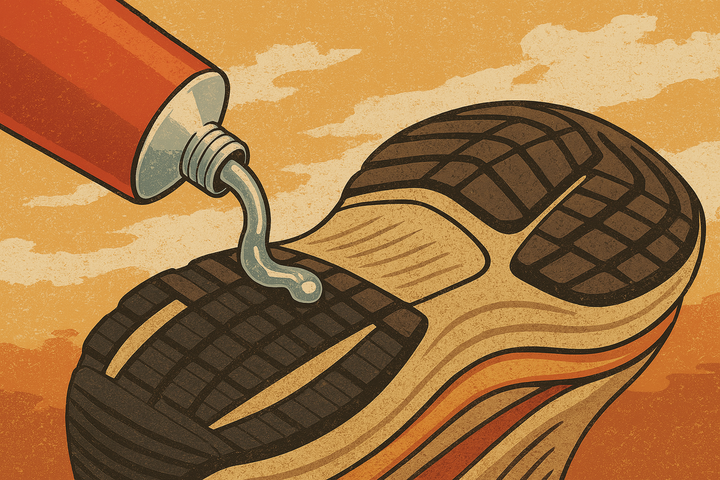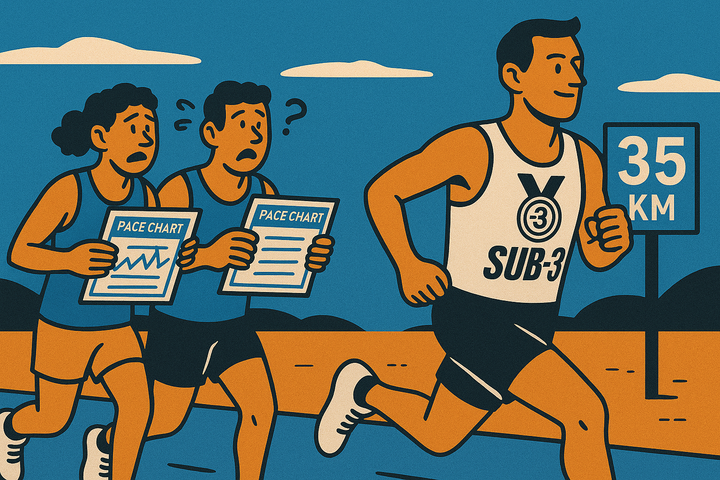Why sub-3 marathoners should embrace elevation
It’s tough, often ugly, and sometimes misunderstood — but strategic hill training can transform your strength, form, and marathon performance.

I always know a marathon block is truly underway when I find myself back on the hills. Usually very early in the morning to avoid traffic, I warm up gently, then tackle a local incline for a block of steep, repeated efforts. It starts with something like 6 × 60 seconds uphill as hard as you can, with 2 minutes walk/jog recovery. Then it builds. At the peak of the block, I’m doing 10 × 90 seconds at full intensity, with 2.5-minute recoveries.
It’s the one session that gets you noticed — not for your form, but for how mad you look. Runners and passers-by beep from cars, usually with encouragement. You’re panting at the top, hunched over, dripping with sweat. The effort is raw, all-out, and completely worthwhile.
Even if you’re targeting a flat course like Berlin, hills have a place in your sub-3 training. The physiological adaptations — increased muscular power, improved running economy, and enhanced VO₂ max — pay dividends on any terrain. A short, steep hill lets you recruit more fast-twitch fibres without the joint load of track sprinting. And the mental resilience it builds is priceless.
Coaches have been advocating hill training for decades. Pete Pfitzinger called them “strength training for runners”. Jack Daniels used them to condition athletes before layering on speed. And books like The New Competitive Runner’s Handbook recommend hills as a foundational tool for endurance development. I personally find you can tell who's been doing hill reps even on gentle hills during races, or even parkruns, those more experienced approach with confidence and good form. Those who haven't put in the time - including some usually powerful runners - slow down and struggle.
But here’s the key: don’t overdo it. Hills are demanding. One session per week is plenty — and always follow with an easy or recovery run the next day. Think of them as a form of resistance training: taxing, high quality, and worth spacing out. Later in the block, you can transition to more speed-based work on the track or road.
And don’t neglect the downhills.
Why downhill matters too
It’s tempting to jog gently back down between reps — and in most sessions, that’s fine (I'm normally too exhausted to do anything but). But learning to run downhill well is a subtle art. It trains your quads eccentrically, improves balance and cadence, and gives you the confidence to flow, not brake.
Elite marathoners often gain significant time on descents. If you’re tentative, or constantly hitting the brakes, you’ll not only lose seconds — you’ll fatigue faster too. The key is control, not recklessness: short strides, upright posture, and relaxed arms.
You can incorporate downhill strides into your sessions once you’ve got a few weeks of hill work under your belt. They’re best kept short, smooth, and technically sharp.
Three hill workouts worth trying
If you’re looking to build strength, speed and resilience on the hills, here are three proven sessions to try. Slot one in every 1–2 weeks early in your marathon block. Most running watches will allow you to programme these into a workout, but you could also try a platform like FinalSurge.
The Classic Climb
6–10 × 60–90 secs uphill hard (Gear 3), 2–2.5 min walk/jog recovery
Great for building strength, form and mental grit. Push hard uphill, then focus on relaxed recovery.
Power Builder
10 × 30 secs uphill sprints, jog down recovery
Short, explosive efforts — ideal for improving recruitment and form under fatigue. Keep the quality high.
Downhill Resilience
5 × uphill reps + 4 × 45 sec downhill strides at ~10K effort
Once you’ve built a base, controlled downhill running can train your legs to absorb impact. Focus on light feet and smooth form.
Note: Hills are demanding — so follow with an easy day, and avoid more than one hill session a week.
Five things to know about hill training for sub-3
1) It improves running economy. Hill reps strengthen the muscles you use most in running, including your glutes, calves and hamstrings — making your stride more efficient.
2) It builds mental grit. Few sessions are tougher than hill reps. Leaning into them trains the mind for late-race suffering.
3) It’s high return, low risk. Compared to sprinting flat out on the track, hill reps place less eccentric load on the body while still building power.
4) One a week is enough. More isn’t better. Let the adaptations settle and make sure you’re recovering properly.
5) Even flat marathoners benefit. Berlin is flat. So is Valencia. But the strength you gain from hills still translates into late-race resilience.
Enjoyed this article? Help keep Sub-3 running — support us with a coffee.
To help fund the running of the site, Sub-3 is an Amazon Associate and earns from qualifying purchases. We only recommend gear or kit that has genuinely helped in our own running and that we believe is worth considering.



